This post was co-written by World Communication Forum Board Member and Keynote Speaker Sean Gardner.

Every area of technology is in constant movement. Artificial intelligence is rapidly transforming cyber-security, robotics, and the automotive industry. Commercial space travel has its sights on a more thorough exploration of Mars. And if we remember, it was last summer when a group of genetic engineers announced they were going to “build an entire human genome from scratch.” This is what cloudHQ co-founder and CMO Naomi Assaraf gets audiences talking about.
In the era of social media and instant news, innovation is front and center. From Miami to Mumbai, every day can bring something new. Go to bed with an article about how gloves can translate sign language into spoken word and text, and wake up to the latest news about the possible routes for the Hyperloop, a futuristic transport system.
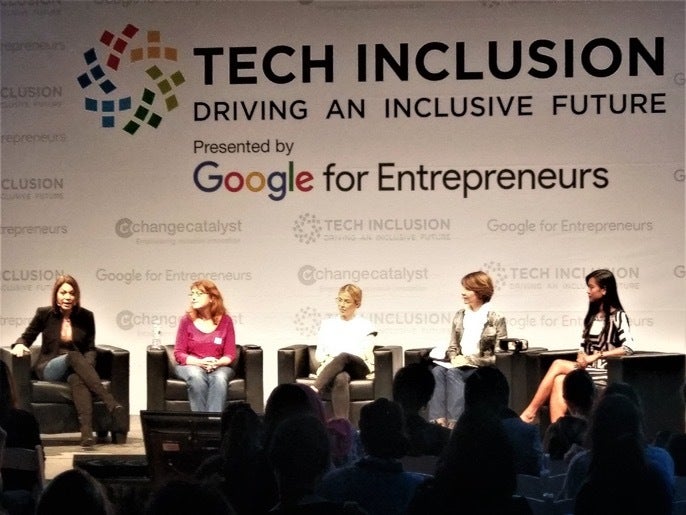
There is excitement and embrace of “what’s next.” Many remember the late Alvin Toffler, whose Future Shock (1970) and Third Wave (1980) books inspired millions to be forward thinkers. A renowned futurist, Toffler wrote about eventual advances in nanotechnology, personal computing, cable television, and mobile communication. More recently, Alec Ross ― former Senior Advisor to the Secretary of State ― wrote about what will be defining the next ten years in his book The Industries of the Future.
Toffler was a big thinker. Alex Ross definitely qualifies. So too does Mary Meeker, the famed analyst on global trends and new technologies. As we approach the third decade of this new, still unfolding millennium, it is an honor for anyone to read the work of these three giants, and countless others. And this is why it is easy to admire Silicon Valley founder and CMO, Naomi Assaraf. An important player in the highly profitable field of productivity apps, she also has her eyes towards what is poised to transform every aspect of society.
Her acclaimed keynote on artificial intelligence (AI), virtual reality (VR), and augmented reality at the World Communication Forum should give everyone a strong understanding of the depth and scope of her knowledge. Storytelling, it has been said, is an effective way to illustrate a point. And when you are seeking to educate, your stories and language have to be relatable and accessible. This is where Naomi soars.

With a background in both sociology and marketing, it is easy to see why she is endlessly curious about the evolution of communication in the Information Age. We were able to sit down with Assaraf and get her opinion about the destiny of communication. Naomi describes our present-day communication as continuously evolving, addictive for human survival, yet still limited in our capabilities. Take texting for example ― a progressive way to communicate, yet we’re unable to share and receive body language signals, which are a huge component in face-to-face communications. Naomi credits emojis and GIFs with evolving texting communication, allowing us to give more human emotion and meaning to the words we are texting.
So with communication, where do AI and VR come into play? There are some limitations to overcome ― costs, inability to make eye contact, motion sickness, and the conversational anomalies that come with talking to an artificial intelligence program. In Naomi’s opinion, however, there are infinite possibilities because there is a significantly meaningful, emotional appeal to virtual reality, and that is due to the activation of multiple senses leading to a depth of connection that one can only get in virtual reality.
Naomi finds that virtual reality is on fire right now, and it’s evolving our communication faster than ever because it is immersive, impactful, memorable, and has a huge potential revenue reach in the next five years. It’s no surprise why Naomi, with her intuitive understanding of how to transform unsuccessful businesses into profitable ones, is a known leader for marketing, sales, and virtual reality ― and we look forward to her next moves.

Video is making a big play right now. What impact do you see it making in the coming years?
Video has a progressive evolution to it. In order to understand its impact, we need to look at what makes it attractive to viewers. And we need to go through video as it stands today, 360 video, and the ultimate transformative “video,” virtual reality. We already know video is easier to understand than text ever could be. And it’s completely logical. In order to read text, our brains go through an incredibly taxing cognitive process to understand what’s being communicated. Even reading this article right now is actually helping you to become more intelligent. Which is why video is easier for storytelling. It’s a less brain-taxing method for the receiver to understand a message.
360 video is new. And like anything new that underperforms, it’s under a lot of heat right now. While click-through rates are much higher with 360 video, engagement rates are actually much lower—which means that, while an audience might want to click on a 360 video more than a 2D video, they won’t sit through the entire video’s duration. It can only work well if messaging is very succinct.
But, that is now. Let me tell you where I see this going in the future. I see us being immersed in some form of mixed reality. While augmented reality will be suitable for the next 2-3 years, people will prefer a virtual reality application in about 5 years. Once we get into the virtual reality era, videos will be completely non-existent.
While I predict that 2D video will die, 360 video delivered inside our virtual headsets will have the sole purpose of helping our brain relax. Have you ever heard of the old adage that you should listen to someone else’s problems to help get your mind off of your own? That’s why viewers watch TV shows, movies, or—to an extent—the news. It’s to keep their brain occupied so that they can relax—almost like a more ineffective form of Emotional Freedom Technique (EFT). That concept will never die, so if you want to build something based on neuroscience, remember that we all need some level of relaxation. Jaunt is an excellent company to watch who is on the frontier of this realm. And another one to watch is Magic Leap, which just hired the co-founder of Lucasfilm’s ILMxLAB, John Gaeta.
As for specific virtual relaxation apps, they’ll be paired with artificial intelligence, or at the very least, machine-learning programming. This will allow apps to indulge our need for hyper-targeting so they can address your specific needs. These experiences might be passive or they might be interactive—depending entirely on the user.
Back to video in virtual reality, imagine being in the cinema—except, while the video is playing in front of you, you can also interact with the environment. You can pretend to eat virtual popcorn for example or jab your friend in the side while joking around. This is the future of 360 video in virtual reality. And this is very similar to how some early adopters already interact with each other in Facebook Spaces today.
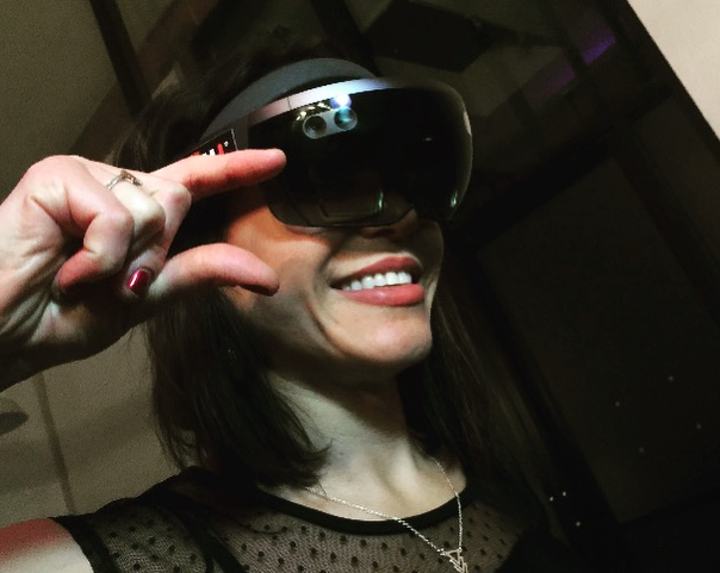
Like your company, cloudHQ, tech giant Microsoft is making lots of money with Cloud Computing. Why is that sector so important to business?
Businesses used to believe that they should have all their data housed in their own server rooms. It was a great idea at the time for security. But now, Amazon, Microsoft, and Google offer unmatched server security—making cloud storage so much more exciting because it costs less to manage and store all your company data. It’s virtually illogical to store anything in-house anymore.
It’s also worthwhile to note that both Microsoft and Google are getting into workflows very aggressively. While Microsoft has MS Office 365, and Google has G Suite (aka Google for Work), tools are very separate from workflow. This is a ripe space for workflow—which is why cloudHQ is currently focusing on Gmail workflows to make it more productive for its over 1.5 billion monthly active users worldwide. It’s an impressively large pool to dive into.
And as of right now, we have over 30 freemium and premium Gmail add-ons that our customers are very passionate about.
So many people confuse Virtual Reality, Augmented Reality, and Mixed Reality. What's the difference, and which of these are you most excited about?
All three realities require you to wear a helmet or glasses to change what you see and hear. You also need a controller for touch. Currently, there are traditional controllers that come with your Oculus or Vive, but you can also use tactile gloves or soon you’ll be able to use the much anticipated HTC Vive Knuckles.
Virtual Reality is a completely fabricated environment that cannot be true in our reality. Usually, you’ll see VR in the form of games, travel, or leisure apps.
Augmented Reality adds a layer of the virtual over your normal senses. It’s what many thought leaders believe will become the most-used and most-profitable form of reality—because there are so many potential uses for it. Imagine furniture shopping in augmented reality—or viewing instructions while you’re assembling a piece of Ikea furniture, for example.
Mixed Reality is less developed than the other two. It allows you to see reality plus something totally fabricated at the same time in your reality. It’s exciting because they coexist in time. It sounds like AR, but the major difference is that the fabricated thing could interact with reality.
Imagine that it’s really windy outside as you’re walking down the street on the sidewalk with your Mixed Reality gear on. The software senses the change in wind, and it knows you’ve been in the market for a motorcycle from your previous search activity. On its platform, it digitally sends you a BMW ad. Maybe it’s in the form of a BMW HP4 Race motorcycle that drives by you with an amazing sound from its powerful engine. It’s so powerful in sound and swiftness, it works perfectly with the wind and it increases your heart rate from experiencing its sheer intensity. Just thinking about these kinds of ad possibilities makes me very excited to see where this could go.
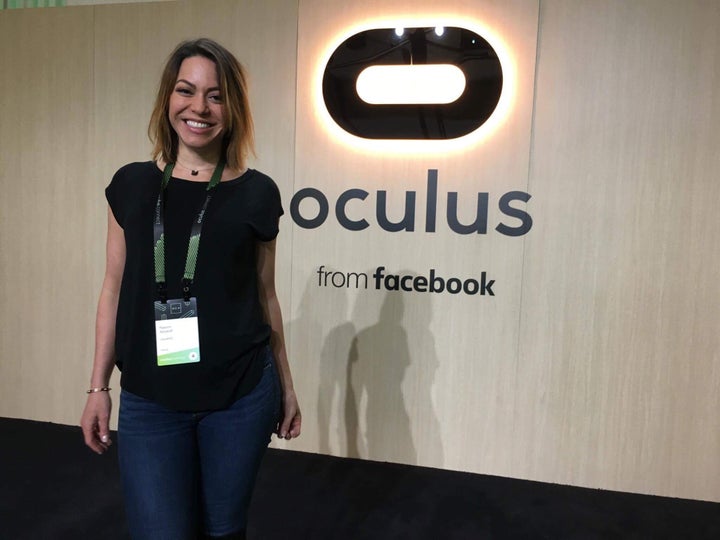
Artificial Intelligence, or AI, is emerging as something that is both exciting and concerning for a lot of people. What's your take on its potential impact on the job market?
AI is an incredible development. It will serve to improve many people’s lives by learning what they like and helping them find relevant information. It will serve to eliminate human biases and create a more mainstream decision workflows.
AI can serve as more than just an assistant though. In Japan, for example, many businessmen have a hard time finding a wife and their suicide rates are very high. In the same respect, the elderly in the west are also very lonely. Perhaps AI can serve as more than just an assistant. I want you to suspend your beliefs about AI and think about the ethics and maybe positive changes that can come about if a human created a platonic relationship with an AI. Look at what Gatebox created, and note that the businessman is actually falling in love with his AI assistant. We can judge as much as we want to, but we have to foresee the full scope of what can happen as AI gets more human-like. Sophia, an AI sentient, just got her Saudi citizenship a few months ago. Things are changing. The question is: are we ready for them?
Aside from AI’s immense benefits, AI has 3 major issues, and more that are sure to come:
First, limited scope of view. Think of news that is skewed to fit only one viewpoint. It will limit discourse between people—segregating them very deeply. A good solution to that is to subscribe to bots that serve to send you an unskewed viewpoint of current affairs. It will make you a smarter person if you do that, because your social skills will be more developed when you meet others who think differently than you do.
Second, the job market. Yes, jobs will disappear. But new ones will also appear. It’s up to us to learn new skills. We have unlimited access to the internet at most Starbucks cafes, libraries, etc, and most of us have a computer where we can choose to learn how to code, learn marketing skills, or any other skill that you feel will be desirable as AI replaces basic customer service jobs. I really don’t worry too much for the American people. But, as my friend Peter Mullen points out, the employees overseas who do customer service tasks in call centers like India or the Philippines will feel the brunt of joblessness due to AI more than any others, because they have less access to reliable internet and computers. I have no solution to offer this issue. It might need to be regulated by a means of international law.
Third, as AIs build data upon itself, what will the extent of their knowledge become? And with that knowledge, they will likely become more powerful than humans. Will they become our enemies?
I know it’s impossible to stop AIs from generating new code, but it is just a machine that can have fail safe solutions. So, while old Hollywood movies are playing on our fears, I think the potential that AI has is so tremendous, it would be foolish not to explore.
Self-Driving vehicles are now all the buzz. Quartz did this amazing piece this year on their potential impact. How do you see them evolving?
You know, this is a funny question because self-driving cars was actually my first business idea back when I was maybe 6 or 7 years old! I never understood why cars couldn’t drive themselves on a track, much like a cable car. Despite my very early ideas on the subject, I far prefer where Elon Musk is taking it.
Most autonomous car companies are aiming for a complete release by 2020, with the exception of Tesla, who is, in my opinion, the leader in self-driving transportation. They are unique in their market share by the mere fact that their cars are already on the road. They just need to keep upgrading them with software updates.
Evolutionarily, I don’t even see car transportation as a future means of transportation at all. Considering our growth population and the vast amounts of real estate space allocated to streets, it is logical that streets can become great real estate housing opportunities. I think cars will be abolished and unnecessary (the way we know it today).
If we can create self-driving cars, doesn’t it stand to reason that we can also create self-driving planes? When you think of it in that way, it doesn’t seem so outrageous. In fact, Boeing is currently investigating this heavily. And if we can create self-driving planes, can we not create smaller versions of air travel vehicles?
The evolution of this technology doesn’t revolve around cars — that would make you think small. The real evolution lies revolves around the self-driving technology itself. That’s where the excitement lies.
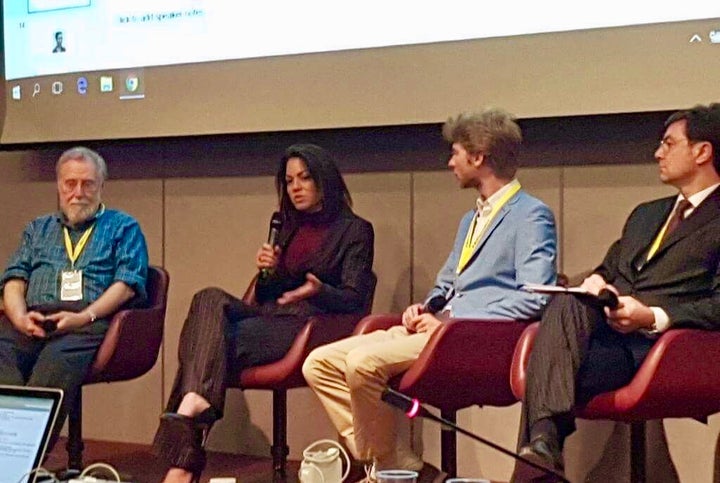
You mentioned 'Cloud Cities' to us. Talk a little bit about that.
Drawing from the logic of self-driving vehicles, there’s a very important factor that led me there: growth population. In 2100, the global population is expected to reach 11.2 billion people. For reference, we are only 7.6 billion today.
If we specifically look at factors such as longer life expectancy, birth rate, and possibly the deterioration of our environment, we can see that healthy living spaces will at one point become an issue.
I think that building cloud cities is not unreasonable to foresee. Imagine living with a false floor that actually lies above sea level. We would never need to worry about earthquakes or tidal waves, or even just a place to live if, for example, icebergs melt to the point where there’s very little land mass left. In fact, that would be the ultimate way to use living spaces on Earth more efficiently, with or without landmass scarcity issues.
And, on that note, there’s a Nasa Exoplanet Archive that lists possible “exoplanets” for any of you travelers out there! Of course, I kid, but not entirely. If we can somehow manipulate false floors for cloud cities, we can also theoretically consider cloud city construction anywhere that’s hospitable to human life forms. As our population continues to grow and our needs continue to evolve, we need to think about future possibilities.
What was it like to keynote the World Communication Forum's #WCFGenevaWeek event?
It was amazing. It was the first time that I spoke about artificial intelligence and virtual reality in public, and I wasn’t sure about the kind of reception it would garner because of the controversial topics I chose to highlight.
For example, I spoke about a company called Gatebox, who built an AI sentient that mimicked a very intimate relationship with its owner. For most people, I recognize the discomfort that a topic like that might create. But this audience was able to see past the discomfort in order to see its benefits, like companionship for lonely people like the elderly or maybe an only child.
I was able to even geek out a little bit about the possibility that we all have innate evolutionary skills that we lose over time as we age, and was able to reference a Stanford study that showed how fast someone was able to learn how to control a 3rd arm in virtual reality.
The audience’s willingness to think openly was the gift that they gave me in return for my keynote. Thinking openly yet critically are the two cinder blocks for true growth. And for that, and them, I’m grateful.
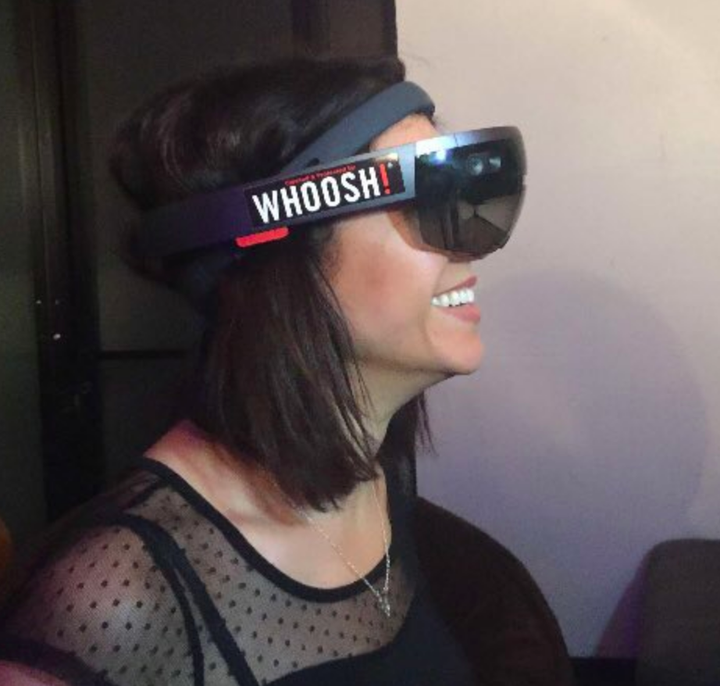
What do you think about Elon Musk's plan to connect brains with computers?
Elon Musk, as always, has undertaken a huge project. Neural lace was presented to the press in June of 2015, and neuroscientists have been working with it since then. It seems like they’ve only been successful with it in very specific scenarios using a form of neural lace called neural dust, and they seem a long way off from a human implantation.
Aside for being a long way off, I have two very conflicting thoughts about this concept.
First, mind control. If we have AI attached directly to our brains, and that AI was engineered by a person or a team, there are definitive issues we must address.
For example - and this is an extreme example - what if racism is a pattern that AI recognizes and then proliferates because it looks and learns from patterns? That would likely mean that engineers must fix this pattern recognition and rewrite some of the coding to bypass it. But what if a group of engineers ar racist without even realizing it, and writes code that doesn’t fix the issue properly? Or worse, that engineer has a boss who is paying him or her and can benefit from systemic racism?
There is always someone writing the code, and there is usually someone who is paying for that code. That is why we absolutely must draw from a variety of ethnically diverse engineers, and moreover, encourage them to learn to code. Here, I credit organizations like Girls Who Code, Black Girls Code, Black Men Code, Code.org, and we need many more like them to help encourage underrepresented people to learn how to partake in the conversation before the conversation simply takes place without them. As of 2015, over 80% of computer science degrees in the United States are held by white males, as illustrated below:
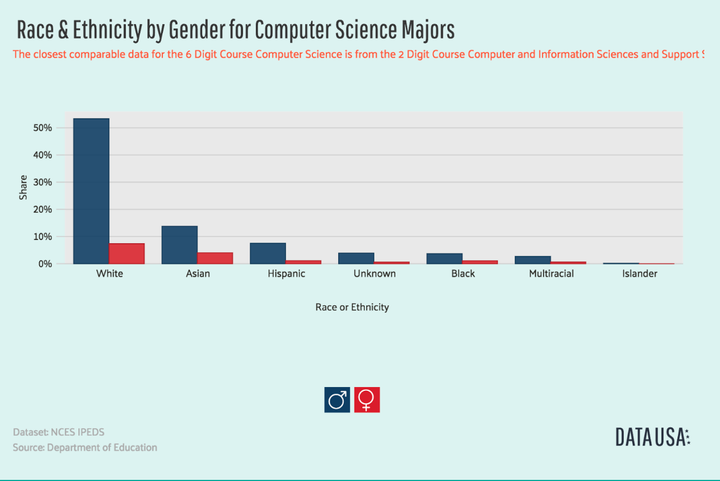
We need to question how can we, as a potential community of users, impartially monitor an AI system that is embedded in our brains if that AI system is helping us make decisions? In court, that would be called a conflict of interest.
Second, evolutionary sixth sense. With so many of us fighting to live with happiness, we can already see a trend of dissatisfaction in our interpersonal relationships, in which we turn to technology to help alleviate that void. That technology can be in the form of chemical antidepressants, or reading the news on our mobile devices, or (re)creating social connections on platforms- I want you to notice how all those options literally change your brain’s chemicals. And even though we’re facing a society who feels less happy overall, we keep craving more tech, like a drug.
Neural lace is one of those interesting advancements that if it works (and that’s a big if), maybe we can surpass those negative feelings and tap right into the positive ones, leaving us with a much more intense feeling of connection than we can possibly achieve otherwise. And if we can have all these amazing augmentations that BCI, or Brain Computer Interfaces, could provide us with, it’s a high probability that it can help us find other skills that we have in our brains that are yet to even be discovered. That kind of power that we could give ourselves is a very compelling reason for further exploration.

CONNECT
